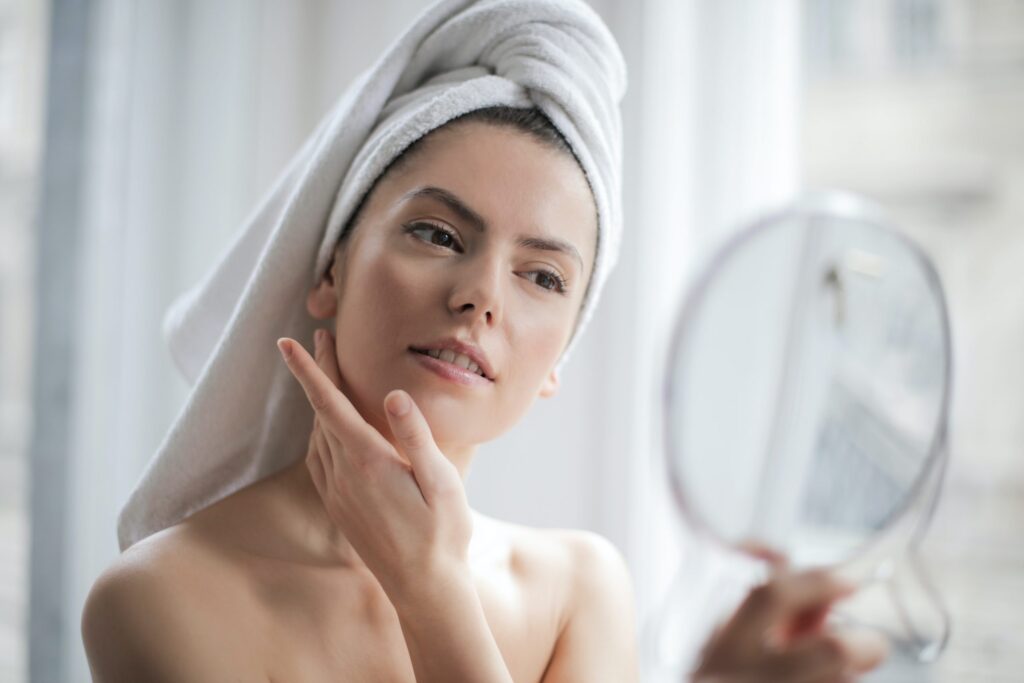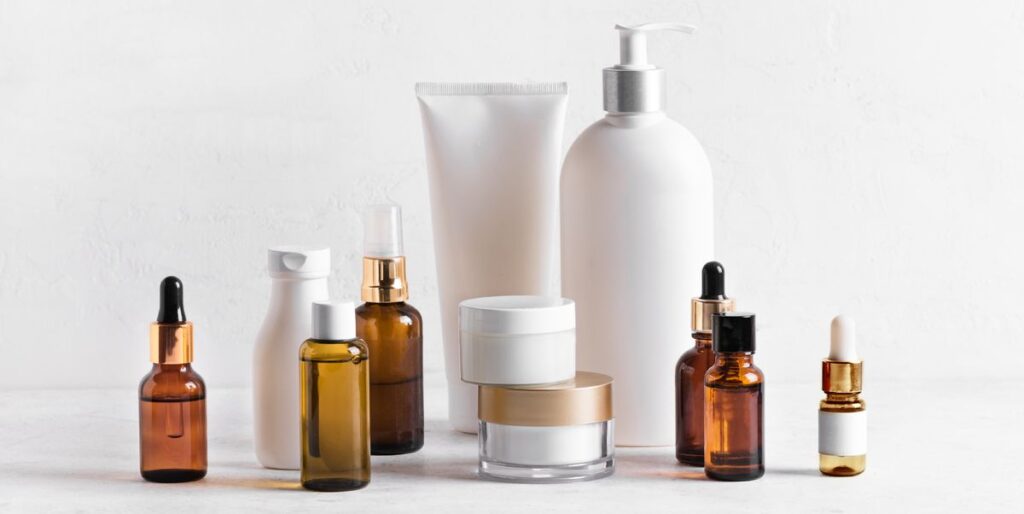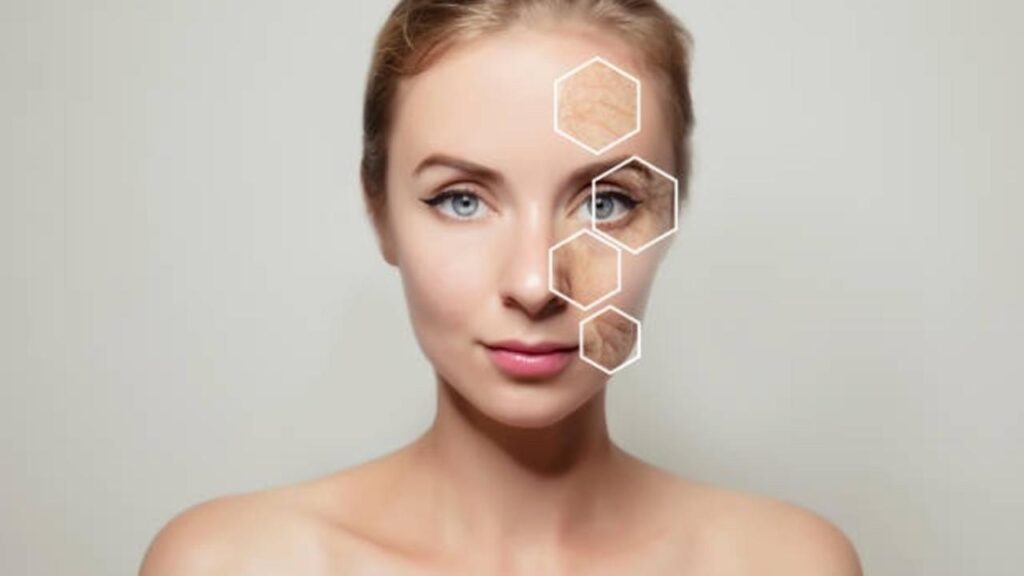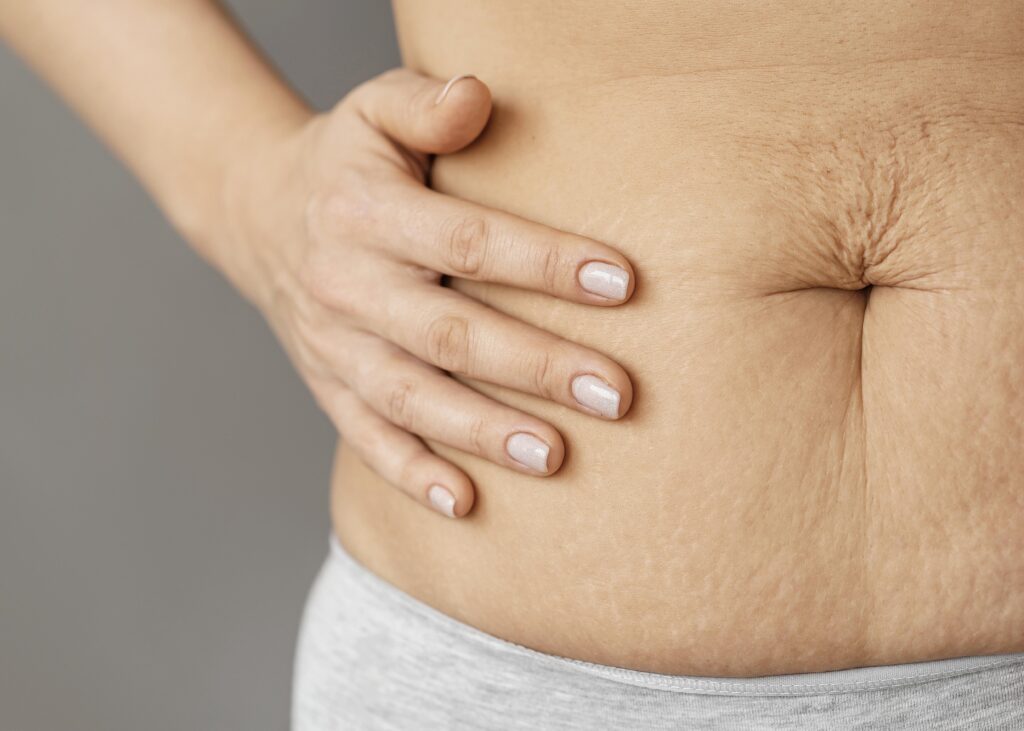
In the world of beauty, skincare routines have become increasingly complex over the years. Most routines work with countless products promising to deliver flawless, youthful skin. But what if the secret to healthy skin lies in doing less rather than more? Absolutely right! A new trend that promises a reset for your skin is known as skin fasting. It is a minimalist approach to skincare that involves taking a break from all skincare products.
This comprehensive guide will discuss: What is skin fasting and how does it work? We’ll also explore how can it transform your skincare routine, the difference between skin fasting and traditional skincare routine, the impact of skin fasting on different skin types, and common misconceptions about skin fasting.
What is Skin Fasting and How Does It Work?
Skin fasting is simply giving your skin a break from all skincare products for a certain period. You can reduce or completely eliminate beauty products, including cleaners, toners, moisturizers, and serums, for a certain period. The idea behind skin fasting is to allow your skin to breathe, reset, and strengthen its natural protective barrier. Abstaining from these products for a designated period, typically one day or longer, allows your skin to reset and restore its natural balance.

During this period, the skin can focus on its natural functions, such as self-moisturizing, regulating oil production, and repairing itself. By reducing or minimizing the use of beauty products, your skin can recalibrate its moisture levels and overall health, potentially leading to a clearer, more balanced complexion.
The Science Behind Skin Fasting
Skin fasting is based on the principle of “less is more”, allowing the skin to return to its natural, self-regulating state. Our skin, being the body’s largest organ, possesses an innate ability to care for itself through processes like shedding dead skin cells and producing natural oils. Our skin has its own mechanism to maintain its health and integrity. Overusing skincare products can disrupt these natural mechanisms and lead to issues such as dryness, sensitivity, and acne. Giving your skin a break allows it to recalibrate and find its optimal state of balance.
The Benefits of Skin Fasting
Skin fasting offers you several benefits that can transform your skincare routine. Some of the benefits include:
- Detoxify Your Skin – Skin fasting allows your skin to breathe and detoxify. Continuous use of skincare can create a barrier on your skin. This barrier prevents your skin from effectively eliminating toxins and impurities. Taking a break from these skincare products can help detoxify and improve the overall health of your skin.

- Regulates Oil Production – Skin fasting can help regulate oil production in your skin. Many skincare products, especially those targeted at oily skin, can strip the skin of its natural oils, leading to the overproduction of sebum. Skin fasting helps your skin to self-regulate. You can achieve a more balanced oil production, reducing the chances of breakouts and excessive shine.
- Improves Effectiveness of Other Products – This process can enhance the effectiveness of your skincare products. Over time, our skin becomes desensitized to the active ingredients in our skincare routine. Taking a break from these products allows your skin to reset its sensitivity. It will enable your skin to absorb better and utilize the active ingredients when introducing these skincare products.
Also Read:
Uncover the 12 Best Facial Exercises To Reduce Wrinkles And Achieve Radiant Skin
How to Start Skin Fasting?
If you’re intrigued by the idea of skin fasting and excitedly willing to give it a try, here are some key steps to get started:
Step 1: Choose a Designated Period
First of all, decide how long you want to fast from skincare products. It can be as short as one day or as long as a week. The duration depends on your personal preference and skin condition. Consult a dermatologist before deciding the initial duration of your fasting.
Step 2:Prepare Your Skin
Before starting the fast, cleanse your skin thoroughly. It helps remove any lingering product residue. It ensures a clean canvas for your skin to work during the fasting period.
Step 3: Stay Hydrated
During the fasting period, it’s essential to keep your skin hydrated from within. Drink plenty of water and incorporate hydrating food into your diet for hydration. You can eat fruits and vegetables for hydration.
Step 4: Protect Your Skin
Protecting your skin from external aggressors like UV rays is crucial even if you’re not using skincare products. Apply a broad-spectrum sunscreen with at least SPF 30 if you go outside.
Step 5: Ease Back into Your Routine
Once the skin fasting period is over, gradually reintroduce your skincare products. Start with a gentle cleanser, followed by a moisturizer, and then add other products as required. Observe how your skin responds and make adjustments accordingly.

Skin Fasting vs. Traditional Skincare Routine: The Key Differences
Skin fasting and traditional skincare routines both have their merits; they serve different purposes and can be complementary. The key differences are given below:
|
Skin Fasting |
Traditional Skincare Routines |
| Skin fasting is often seen as a departure from traditional skincare routine. It is a more holistic approach that allows the skin to reset and restore its natural balance. It doesn’t mean completely abandoning your skincare routine forever. Instead, skin fasting is about finding a balance between giving your skin a break and using products that support its health. | Traditional skincare routines, on the other hand, focus on targeting specific skin issues like acne, wrinkles, or hyperpigmentation. They often involve multiple steps and a variety of products to address these skin concerns. |
Common Misconceptions About Skin Fasting
Despite growing popularity among individuals seeking beauty, skin fasting is still shrouded in misconceptions. Let’s discuss some of the common misunderstandings:
- Skin Fasting is Neglecting Your Skin – There is a common misconception that skin fasting is synonymous with neglecting your skin. It is about allowing your skin to function optimally without relying on external products. Skin fasting gives your skin a break from the constant bombardment of active ingredients and allows it to restore its natural balance.
- Only Applicable for Certain Skin Types – Skin fasting can benefit all skin types. Whether you have dry skin, oily skin, or the skin in between, skin fasting would benefit you in all circumstances. Each skin, however, has unique issues, and skin fasting will apply to every skin according to the specific needs of your skin. Skin fasting will help promote skin balance and allow it to regulate itself.
- Skin Fasting Can Make Your Skin Worse – There’s another myth that skin fasting can make your skin worse. While it’s true that some people may experience a temporary adjustment period during skin fasting, whether their skin may appear dull or congested. It is a natural part of the process. It is a sign that your skin is detoxifying and recalibrating. However, with time, you’re likely to see improvements in your skin’s overall health and appearance.
Tips for a Successful Skin Fasting Experience
If you’ve added skin fasting to your skincare routine, to make the most of your experience, consider the following tips:
- Start Slow – If you’re new to skin fasting, begin slowly and with shorter fasting periods. You can start with one day and gradually increase the duration as your skin adjusts.
- Listen to Your Skin – Always pay attention to how your skin responds during fasting period. If you notice excessive dryness or irritation, it may be a sign to shorten the fasting period. Adjust your skincare routine accordingly.
- Focus on Other Aspects of Skin Care – While fasting from skincare products, you can still prioritize other aspects of your skincare. For example, gentle exfoliation, facial massages, and maintaining a healthy lifestyle must be preferred. All these practices can complement your skin fasting routine and enhance the potential benefits.
Skin Fasting and Different Skin Types
Skin fasting can benefit all skin types. However, it’s essential to consider the specific needs of your skin type during the skin fasting period. Here’s how skin fasting can be adapted for different skin types:
| Skin Type | Specific Requirements |
| Dry Skin | If you have dry skin, the first and foremost thing is to focus on hydration during the fasting period. When reintroducing skincare products, drink plenty of water and incorporate hydrating ingredients like hyaluronic acid into your skincare routine. |
| Oily Skin | Skin fasting can be particularly beneficial for oily skin as it allows the skin to regulate its oil production. However, make sure you cleanse the skin thoroughly during the fasting period. It helps prevent clogged pores of the skin. |
| Combination Skin | For combination skin, finding the right balance is crucial. Focus on gentle cleansing and lightweight moisturizing during skin fasting. Adjust your routine accordingly when you reintroduce skincare products. |
Also Read:
The Ultimate Guide To The Best Skincare Routine For Dry Skin With Hyperpigmentation
Skin Fasting and Specific Skincare Concerns
Skin fasting can address various skincare concerns and promote overall skin health. Here’s how it can benefit specific skin concerns:
- Acne-prone Skin – Skin fasting is good for acne-prone skin as it can help balance oil production and reduce skin inflammation. However, it’s important to consult a dermatologist when you have severe acne or are currently undergoing acne treatment.
- Aging Skin – Skin fasting can improve the effectiveness of other anti-aging products. It allows the skin to reset its sensitivity. When you introduce these products, you’ll likely see better results in reducing fine lines and wrinkles.
- Sensitive Skin – Skin fasting can be particularly beneficial for sensitive skin. It reduces the chances of skin irritation caused by active ingredients. However, it’s important to monitor your skin’s response during the skin fasting period to ensure it rains calm and balanced.
Concluding Thoughts
Skin fasting is a personal journey and a minimalist approach to skincare that can lead to healthier, more resilient skin. It can transform your skincare routine and promote overall skin health. Giving your skin a break from skincare products allows it to reset, restore its natural balance, and address various skincare concerns. However, it’s important to remember that skin fasting is not a one-size-fits-all approach. Before getting into skin fasting, consult a dermatologist if you have specific skin conditions or concerns.
Remember, the key to skin fasting is balance and listening to your skin’s natural signals. Ultimately, the goal is to find a skincare routine that suits your skin’s unique needs and promotes health and radiance. If you’re intrigued by skin fasting, try it and see how your skin responds.
FAQ Section: Skin Fasting
1.How does skin fasting benefit the skin?
By minimizing the use of skincare products, skin fasting can help restore the skin’s natural balance, reduce dependency on products, and potentially clear up issues like clogged pores, acne, and overproduction of oil. It allows the skin to detoxify and heal itself, improving texture and clarity over time.
2.Who should try skin fasting, and who should avoid it?
Individuals with overly reliant skincare routines, experiencing product fatigue, or suffering from persistent minor skin issues may benefit from skin fasting. However, those with severe skin conditions, like eczema, psoriasis, or rosacea, should consult a dermatologist before trying skin fasting, as completely stopping their skincare regimen could worsen their conditions.
3.How long should a skin fasting period last?
The duration of skin fasting can vary depending on individual skin types and needs. Typically, a skin fast could last from one day to a week. Beginners should start with a shorter period, such as a day or two, to see how their skin reacts before attempting longer fasts.
4.Can I wear makeup during skin fasting?
Ideally, skin fasting should include a break from makeup to allow the skin to breathe and function without any barriers. However, if necessary, opt for non-comedogenic and lightweight products that are less likely to clog pores or stress the skin.
5.What should I do if my skin reacts negatively during skin fasting?
Mild reactions like slight dryness or peeling may occur as the skin adjusts. However, if you experience severe discomfort, inflammation, or worsening of skin conditions, reintroduce essential skincare products gradually and consult a dermatologist for advice.
6.Are there any specific steps I should follow to start skin fasting?
Begin by gradually reducing non-essential skincare products, leaving only the basics like a gentle cleanser and possibly a light moisturizer or sunscreen. Monitor your skin’s response and adjust accordingly. Keep the skin clean and avoid harsh environmental factors.
7.What should I do after completing a skin fasting period?
After skin fasting, slowly reintroduce products one at a time to identify how each affects your skin. This can help determine which products are beneficial and which may be causing issues. Listen to your skin’s needs and adjust your routine accordingly.
8.Is skin fasting a permanent change to my skincare routine?
Skin fasting is more of a temporary reset than a permanent change. It’s meant to give your skin a break and help you evaluate the effectiveness of your skincare products. Based on the experience, you may choose to simplify your routine permanently or periodically incorporate skin fasting to maintain skin health.

